The concept of getting a good sound is changing
By Jon Liebman
Week of May 10, 2021
When learning bass, in addition to knowing how to play the instrument, it’s important to know how to get a good sound.
I’d always assumed that that mostly meant knowing how to get a good tone from your amp. These days, though, that may not necessarily be the case.
I wouldn’t exactly call it a new trend, but it seems increasingly commonplace these days to find amps being swapped out in favor of in-ear monitors.
Is the bass amp going the way of the megaphone?
I got to thinking about the subject during a rollicking conversation I had with Weapons of Anew bassist Stefan “Reno” Cutrupi for this week’s FBPO interview.
When the subject of amps – and in-ears – came up, I can’t say I was totally shocked at what Reno had to say, but given his band’s hard rock culture and persona, I was a little taken aback.
Not so long ago, having an amp was a given, a necessity for every bass player. In today’s world, amps aren’t always required, or even desired. In Reno’s case, “it turns out that the way our studio was set up, I just don’t really need them more.”
The same can be said for live performances. Traditionally, especially in rock, you’d expect to see a hefty backline on the stage, regardless of the type of venue. “I’m so used to it blasting at my face!” Reno says.
But that sentiment may be changing. After all, if the job can get done just as well, or even better, with a “schlep-free” alternative, why not go for it?
“I don’t really need a rig right now,” says Reno. “I don’t need to carry 9,000 pounds of speakers and big 8x10s anymore, or the heavy frigging amplifier.”
I think we can all relate to that.
So, are amps going away? It seems that more people are finding that the feeling of using in-ears is surprisingly good.
Reno concurs. “On the last tour,” he continues, “I got so used to playing with ear monitors, which I didn’t think I was really going to dig.”
And he’s growing to like the change. “It’s like, ‘Oh, I have a little bit of everybody,” he says, “’and I turn it up and down as I need.’ It’s kind of Prima donna-y, but who would’ve thought?”
What about you? How do you feel about in-ears versus amps? Do you like the idea, or are you old school? Leave a comment below and let me know what you think. In the meantime, check out my interview with Reno here.
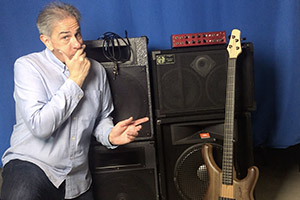

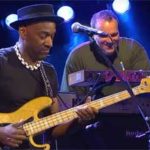
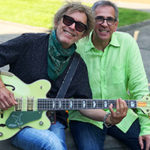
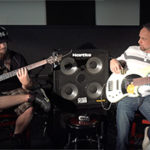
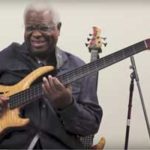
I’m 67 years old Jon. And while I learned coping with change as opposed to fighting it is alone can really do. But let’s get real, what’s your hearing going to be like after five years of using in-ears. Once your hearing is gone it’s gone. Sorry I don’t trust it.
For my club gigs I played before the pandemic, I used both class D amps and for some shows in-ears. I am old school and like to hear the tone of my amp, it took me so many years to find it ( chasing “my tone”) But I have been running my Sansamp bass driver 2 pedal Di out to the FOH and like what I hear in my in-ears. So maybe in time I will ditch the amp for live shows. I know my ears will thank me for causing no more damage to them, 54 years banging on 4 strings has taken it’s toll for sure. As always Jon thanks for keeping bass players informed
I’ve played a lot of church gigs, musicals and other shows. On the whole, I’ve used either in-ears or a smallish (80W or 100W, 1×12 or 2×10) amp for foldback. I like the sound of the amp, but it doesn’t need to be huge. If the bass needs to be any louder there’ll be a PA to fill the house. If its all coming from my amp, the sound person is definitely going to complain!
I hate in ear monitors and I’ve had the top of the line. I’m too much into ‘reality’ to tolerate the lack of it from in- ears. In the studio a nice set of phones are great, totally different than in ears. The shape of your ear and inner workings are defeated by cramming a module with 6 or 8 tiny speakers inside.
I’ve been using IEMs for more than 15 years. The big thing was gaining control over the mix, so I bring a splitter and a Metric Halo powered rig (which has the added benefit of being able to make state of the art multitrack recordings). Everyone is now on ears and can manage their own mix. Recently, I have gone speaker-less after getting a BackBeat, which is like a kicker that goes on your strap to provide the low end. It’s powerful enough to get my bass to feedback through my body. Being able to load in in one trip (including IEM rack) is pretty cool.
Vinny states that he is concerned about doing damage to his hearing with IEMs, but in my situation, I would not be able to gig without them, as they allow me to cut the volume to my ears drastically (I’m 60). I already have enough tinnitus and IEMs allow me to finish a long night with no additional ringing. My hearing tests from the last 20 years essentially overlap, with a few small variations. I think IEMs are only dangerous if you do them wrong (one in, one out is a hugely dangerous practice), turn them up to simulate the pants waving impact of a massive rig, or have a fool doing the mix.
OTOH, I brought out a Sunn 200S to my gigs this past weekend and it was just fun to move so much air. The FOH guy (in a venue of about 2000) said it contributed nicely to the tone of the bass in the audience as well. However, it’s going to stay home at the next few gigs.
Hi Jon
How do in ears work if you don’t have a front of house PA?, for the young bands playing in small venues or pubs are they necessary and can they be used?, I personally have never used in ear monitoring so can’t really comment on them but do love listening to the sound of my bass through my amp and the band in a live setting
John